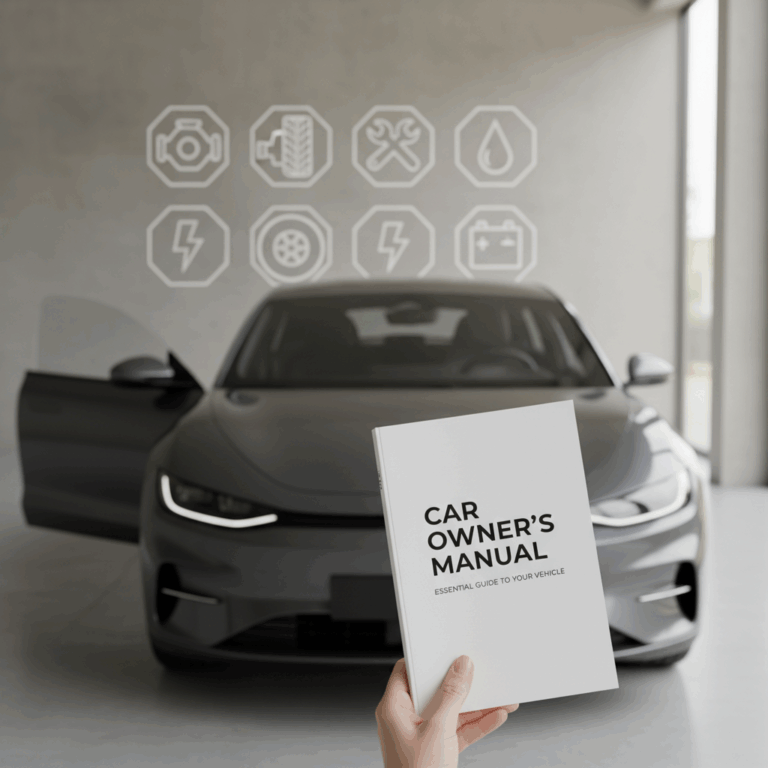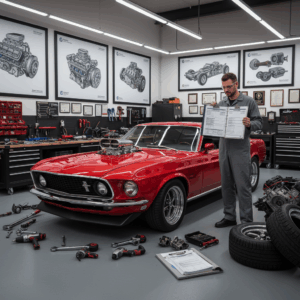Understanding the Car Owner’s Manual
The car owner’s manual is essential for ensuring your vehicle’s safety and proper function. It is provided by the manufacturer and contains detailed guidelines.
This manual helps you understand how to care for and operate your car, covering key components and maintenance requirements for optimal performance and longevity.
Purpose and Contents of the Manual
The main purpose of the manual is to guide owners on the correct handling and maintenance of their vehicle. It includes instructions for safe operation and component care.
Contents typically include specifications for fluids, tire pressure, and maintenance schedules, along with advice on emergency procedures and safety tips to follow.
By consulting the manual, owners gain valuable knowledge to prevent mechanical issues and maintain the vehicle’s efficiency and reliability over time.
Key Information Provided
The manual explains the proper levels and types of engine oil, brake fluid, and coolant to ensure the vehicle runs smoothly and safely under varied conditions.
It also defines dashboard symbols and warning lights, helping drivers recognize potential issues early and respond appropriately to avoid severe damage.
Additionally, the manual offers recommendations on driving practices that improve fuel efficiency and overall vehicle longevity, enhancing your driving experience.
Maintenance and Safety Guidelines
Following the maintenance and safety guidelines in the owner’s manual is vital to keep your vehicle running smoothly. These instructions help ensure safety and prevent costly repairs.
Understanding fluid usage, tire care, dashboard indicators, and emergency steps can make a significant difference in how well your car performs and how safe you are on the road.
Proper Use of Fluids and Tire Pressure
Using the correct type and amount of fluids such as engine oil, brake fluid, and coolant is crucial. These keep your vehicle operating efficiently and prevent damage.
The manual specifies the right tire pressure, which impacts fuel economy, tire wear, and vehicle handling. Maintaining recommended pressure enhances safety and comfort.
Regular checks ensure fluids are at proper levels and tires are inflated correctly, minimizing risks of breakdowns and accidents.
Dashboard Indicators and Their Meanings
The dashboard lights communicate important information about your vehicle’s status. Understanding their meanings allows prompt action to avoid serious issues.
Warning symbols can indicate problems like low oil pressure, engine overheating, or brake system faults. Ignoring these can lead to expensive repairs or danger.
Refer to the manual to familiarize yourself with each indicator, making it easier to identify when service or maintenance is needed.
Emergency Procedures and Safety Tips
The manual provides guidelines for handling emergencies like flat tires, overheating, or electrical failures. Knowing these steps improves your response and safety.
Safety tips include how to use hazard lights, safely stop the vehicle, and call for assistance. This preparation reduces stress and protects occupants during unexpected events.
Quick Tip: Emergency Kit Essentials
Keep an emergency kit with a first aid kit, flashlight, jumper cables, and basic tools in your car. The manual often suggests items tailored to your vehicle’s needs.
Benefits of Following the Manual
Adhering to the car owner’s manual helps prevent costly mechanical failures, ensuring your vehicle remains reliable and safe. This proactive approach supports early detection of issues.
Following the recommended guidelines maintains proper care, reducing the risk of unexpected breakdowns and extending the vehicle’s useful life with minimal repairs.
Preventing Mechanical Failures
Regularly consulting the manual empowers owners to identify signs of wear or malfunction early, addressing problems before they escalate into serious failures.
Using the specified fluids and performing scheduled maintenance reduces strain on engine components and other systems, preserving overall function and reliability.
Ignoring the manufacturer’s care instructions often leads to premature part wear, expensive repairs, and diminished vehicle performance.
Enhancing Vehicle Efficiency and Longevity
Following the manual’s guidance improves fuel efficiency by promoting proper maintenance and driving habits, which ultimately save money and reduce emissions.
Consistent maintenance, such as correct tire pressure and timely fluid changes, helps your vehicle run smoothly for longer, maximizing its lifespan.
By respecting factory recommendations, you maintain optimal mechanical condition, avoiding unnecessary stress on parts and extending durability over time.
Consequences of Ignoring the Manual
Ignoring the car owner’s manual leads to improper use and missed maintenance, which can result in diminished vehicle performance and costly repairs.
Failing to follow the guidelines increases the risk of mechanical failures, reducing your car’s efficiency and shortening its overall lifespan.
Increased Repair Costs and Reduced Performance
Without proper maintenance as advised in the manual, minor issues can escalate into major faults, requiring expensive repairs that could have been avoided.
Incorrect fluid levels, neglected tire pressure, and missed routine checks lower the vehicle’s performance and fuel efficiency, increasing operational costs.
Delaying or ignoring recommended servicing schedules results in wear and tear that reduces engine power and compromises driving quality.
Risks to Safety and Vehicle Durability
Neglecting safety procedures and guidelines can put you and passengers at risk by increasing the chance of accidents caused by unnoticed warnings or faults.
Ignoring emergency procedures can lead to dangerous situations, like responding incorrectly to dashboard warnings or breakdowns, which impair safety.
Long-term disregard for the manual accelerates vehicle wear and damages critical components, significantly reducing the car’s durability and reliability.







